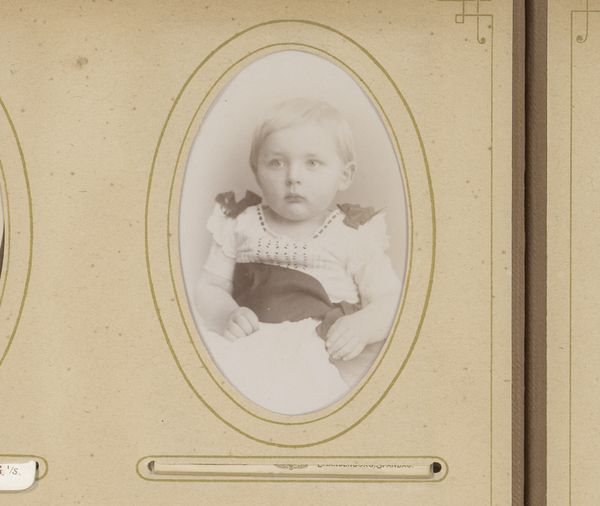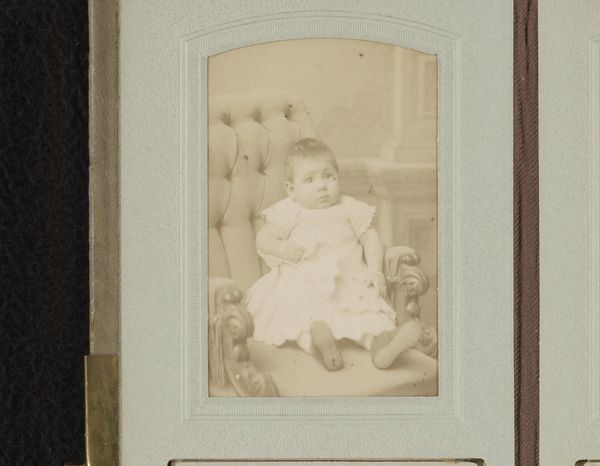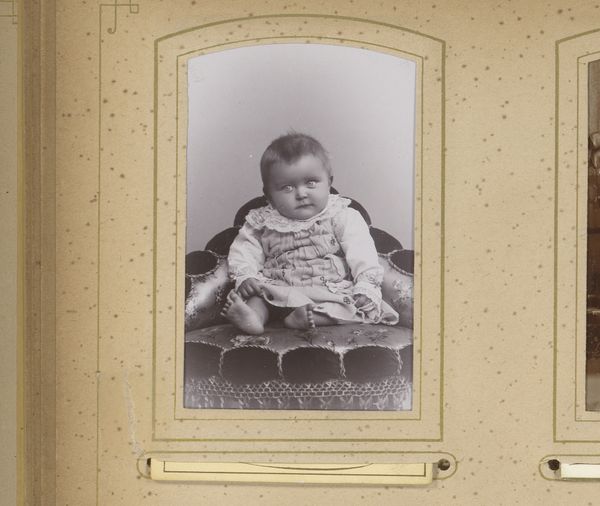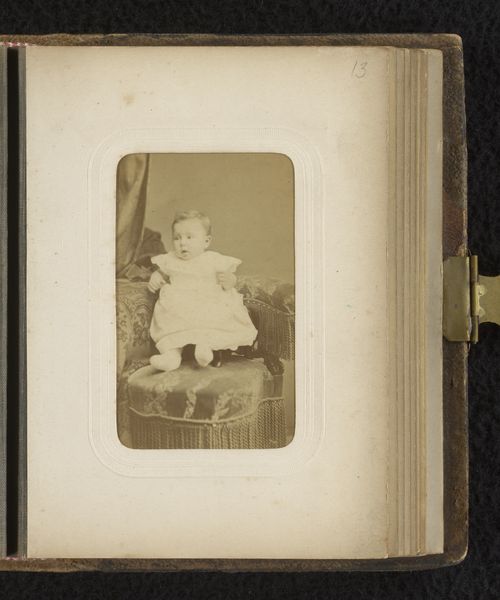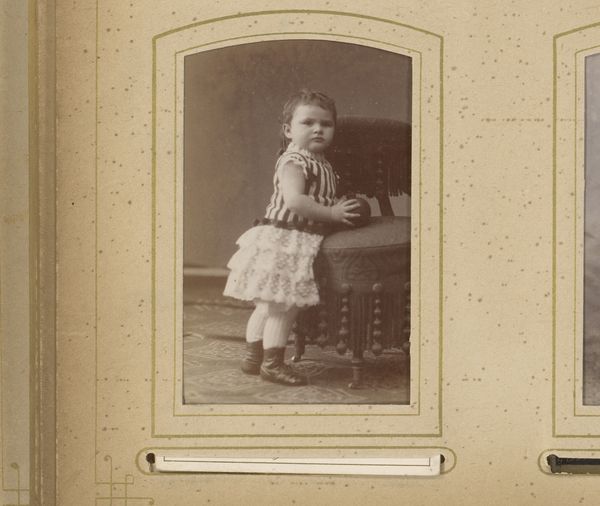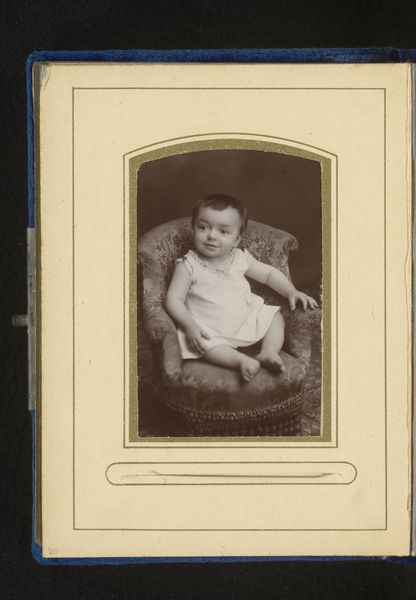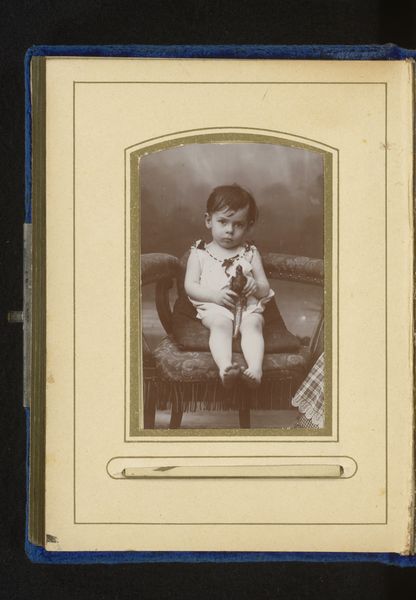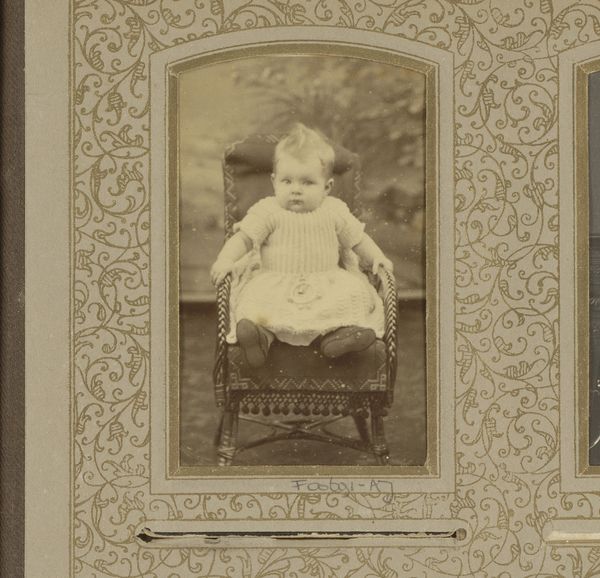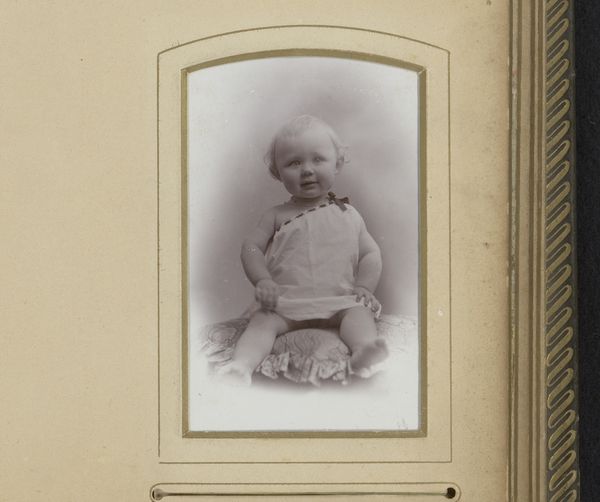
photography, gelatin-silver-print, albumen-print
#
portrait
#
photo restoration
#
sculpture
#
archive photography
#
photography
#
framed image
#
gelatin-silver-print
#
photographic element
#
genre-painting
#
albumen-print
Dimensions: height 84 mm, width 54 mm
Copyright: Rijks Museum: Open Domain
Editor: This is "Portrait of a Baby on a Chair," taken between 1890 and 1910, by Willem Gerhardus Kuijer. It looks like an albumen or gelatin-silver print, mounted in an album page. It has a wonderfully somber feel to it, despite its innocent subject. What stands out to you in this work? Curator: It's fascinating to consider this image as an artifact, embedded within a system of production and consumption. Look at the props – the upholstered chair, the child's clothing. These speak to the sitter's class status and the industrial processes that made them available. Consider the photographer too; did they own a studio? Who was their clientele? The gelatin-silver or albumen printing process, each has its own material requirements, from the photographic paper and chemicals. Editor: That's a great point! I hadn’t considered the material implications of even the chair. So you’re saying that everything, even seemingly innocuous elements like furniture and clothes, represents larger forces at play? Curator: Exactly. Think about the labour involved. The making of the photographic chemicals, the harvesting of the materials to make the album, even the manufacturing of that child's clothing. Who profited from these processes, and under what conditions were these goods produced? Editor: It gives me a whole new perspective! The portrait isn’t just of a baby, but also of a moment in economic and industrial history. So, what could a photograph like this say about craft versus industry in the late 19th century? Curator: Photography was a relatively new medium that was rising during a time where social status started to get captured and shared in these novel ways, yet we are reminded that, this one click of the button comes from so much labor throughout the entire process to that moment in time, questioning photography as “art.” Editor: I never thought about photography in relation to materiality and labour this way before. Thanks! Curator: My pleasure. Looking beyond the aesthetic is crucial. Now I am curious as to what else we can apply this perspective on.
Comments
No comments
Be the first to comment and join the conversation on the ultimate creative platform.



